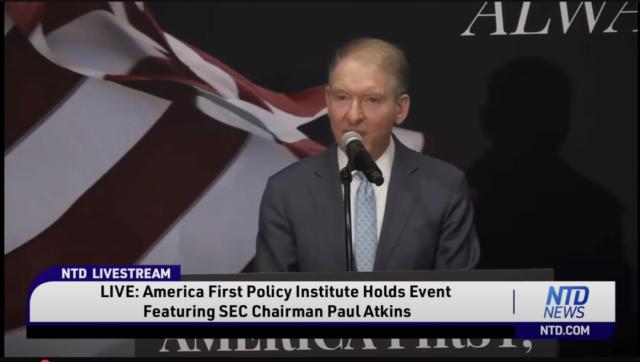Author: Cobo
Original link: https://mp.weixin.qq.com/s/2KZn_cr2bX5LIIvtWgOenA
Disclaimer: This article is a reprint. Readers can get more information through the original link. If the author has any objection to the reprint format, please contact us and we will modify it according to the author's request. The reprint is only for information sharing and does not constitute any investment advice, and does not represent Wu Blockchain views and positions.
Stablecoins are accelerating their position as infrastructure in the digital financial system. As the scale of circulation increases, major jurisdictions are also accelerating their regulatory layout, trying to take the lead in institutional reshaping. Although the United States, Europe, and Hong Kong all emphasize "compliance first", they have gradually moved out of the regulatory paradigm of three differentiated paths in terms of institutional design, market positioning, and technology integration. This differentiation is not only related to the logic of local financial governance, but will also have a profound impact on the evolution of the global stablecoin market and institutional boundaries.
Core comparative analysis: Institutional differences and strategic intentions of the three major regulatory paths
Three typical strategies are being formed in major jurisdictions around the world: the EU attempts to promote market unification and institutional integration with the MiCA framework; the United States focuses on financial dominance and incorporates stablecoins into federal financial infrastructure through legislation; and Hong Kong, China promotes limited openness and tokenization experiments under prudent supervision. The following compares the core differences between the three in terms of regulatory concepts, institutional frameworks, and market goals.
EU: Building an internal crypto market with unified systems
The EU has passed the Markets in Crypto-Assets Act (MiCA), attempting to integrate the crypto-asset market into the existing financial order with a unified regulatory framework throughout the European Economic Area. MiCA has a clear structure and covers a wide range, including all types of crypto-assets (such as electronic money tokens ETMs, asset reference tokens ARTs) and various types of crypto-asset service providers (CASPs).
The EU adopts a "passport system" for licenses and entry thresholds. Once a company obtains a MiCA license in any EU member state, its services can be used in the 30 countries of the entire European Economic Area (EEA), greatly promoting market unification.
This top-level design has rapidly promoted the market compliance process. So far, according to preliminary statistics from industry experts, more than 50 institutions have obtained relevant licenses and initially established a regulated stablecoin ecosystem. However, MiCA's strict restrictions on reserves (such as prohibiting interest payments and limiting investment scope) have also compressed the profit model, causing some institutions to worry about sustainability. Despite this, the unified market entrance and institutional certainty still attract cross-border participants such as Coinbase and BBVA to accelerate their layout.
United States: Evolution from regulatory fragmentation to federal integration
The US's stablecoin regulatory strategy is more geo-financial strategic. Proposals such as the GENIUS Act attempt to incorporate stablecoins into the national clearing and payment system, giving them the role of "extension of the US dollar network." Currently, regulation is led by both the federal and state governments, and most stablecoin issuances are still operated through state-level licenses. However, as the volume of stablecoins grows, federal regulation is strengthening its direct involvement in systemic issuers.
The proposed institutional framework emphasizes the security of reserves (such as 100% coverage by government bonds) and encourages large stablecoin issuers to apply for banking qualifications and master accounts to access the Federal Reserve's clearing network. Circle and Ripple's banking license applications are examples of such explorations. Although this model does not allow stablecoins to pay interest, it is expected to build a new profit path based on credit, custody and financial intermediation through integration with banking business.
Hong Kong, China: Promoting limited opening and tokenization experiments under high thresholds
Hong Kong, China adopts a prudent and pragmatic strategy in the regulation of stablecoins, emphasizing prudent advancement. In the Stablecoin Ordinance, which will take effect in August, the HKMA expects to issue only a single-digit number of licenses in the first batch, highlighting the institutional orientation of "establishing first and then breaking down". Hong Kong requires 100% high-quality reserves, prohibits the use of reserves for risky asset management, and strengthens the functional positioning of stablecoins as payment and clearing tools.
This highly secure system design has compressed the traditional profit space, but Hong Kong is promoting the application of stablecoins in real-world assets (RWA) through regulatory sandbox projects (such as Project Ensemble), including bonds, carbon credits, supply chain finance, etc. At the same time, Hong Kong's role in the RMB stablecoin (CNHC) is becoming increasingly clear, and it is trying to explore new paths for the internationalization of the RMB through the dual-track mechanism of "offshore + on-chain issuance".
Cross-sector impact: Shaping a new digital financial order
As global stablecoin regulation becomes clearer, the institutional boundaries and market roles of this asset class will be redefined. From a macro perspective, the differentiation of compliance paths not only reflects the differences in financial governance concepts among countries, but also reshapes the competitive landscape, profit logic and technical routes of stablecoins.
First, the clarification of supervision is transforming "compliance identity" itself into one of the most important market assets. A license not only means access permission, but also determines whether an institution can access key clearing networks, obtain banking cooperation, and attract institutional clients and venture capital. At present, there is a clear trend of concentration in the market: leading institutions with banking qualifications, compliance capabilities and settlement capabilities are occupying an advantageous position. For example, Circle and Ripple are actively applying for federal financial licenses to master the full chain of authority for stablecoin issuance, custody and circulation. The regulatory dividend has thus become a market threshold, and is also accelerating the clearance of unqualified people.
At the same time, increasingly stringent compliance requirements are also forcing stablecoin projects to adjust their profit models. The traditional income structure that relies on interest rate spreads and reserve interest is being constrained by policies such as restrictions on reserve composition and interest payment bans. Under this pressure, the value logic of stablecoins has begun to evolve towards "service-oriented": its function is no longer a single currency replacement, but is embedded in more complex financial processes such as cross-border payments, asset custody, and on-chain clearing. Profit margins will come more from peripheral services, on-chain asset portfolios (such as RWA), and improved operational efficiency. This type of transformation also reflects the early signs of the evolution of stablecoins from "single products" to "platform capabilities."
The clarification of supervision is also forcing the underlying technical architecture to move towards standardization. Taking infrastructure service providers such as Cobo as an example, they are modularizing and packaging capabilities such as on-chain custody, clearing, risk control, deposits and withdrawals, KYC, and cross-chain interoperability, and providing institutions with "plug-and-play" issuance and circulation components. This type of service not only lowers the compliance entry threshold for stablecoin projects, but also enables non-crypto native companies (such as Web2 transformation companies) to quickly embed relevant capabilities. Technical abstraction and compliance requirements are dynamically coordinated here: supervision defines the boundaries, and technology suppliers are responsible for translating them into executable interfaces, thereby improving the overall flexibility and stability of the system.
From a more macro perspective, stablecoins are becoming a new battlefield for global currency competition. The United States uses the GENIUS Act to promote the access of US dollar stablecoins to the federal clearing system to strengthen its global settlement advantages; the European Union uses MiCA to create unified supervision to enhance the strategic weight of the euro in the digital economy; China combines the "domestic offshore" and "offshore" dual-track architecture of RMB stablecoins to promote the on-chain and cross-border application of RMB assets. These differentiated paths are guiding the stablecoin market to accelerate stratification along geographical and institutional dimensions, and may have a lasting impact on the monetary sovereignty of small countries, cross-border capital flows and financial stability.
However, clear regulation does not automatically mean widespread adoption. Whether stablecoins have the potential to be implemented on a large scale still depends on whether they can achieve "usability" in addition to "trustworthiness". Technical complexity, compliance burdens, and regional differences in settlement efficiency and consumer protection preferences constitute real barriers to actual deployment. Ultimately, how to simplify the user experience and lower the threshold for use without sacrificing the regulatory bottom line will determine whether stablecoins can gain mainstream status in daily payments and value storage. This is the last link that regulation and technology need to solve together.







